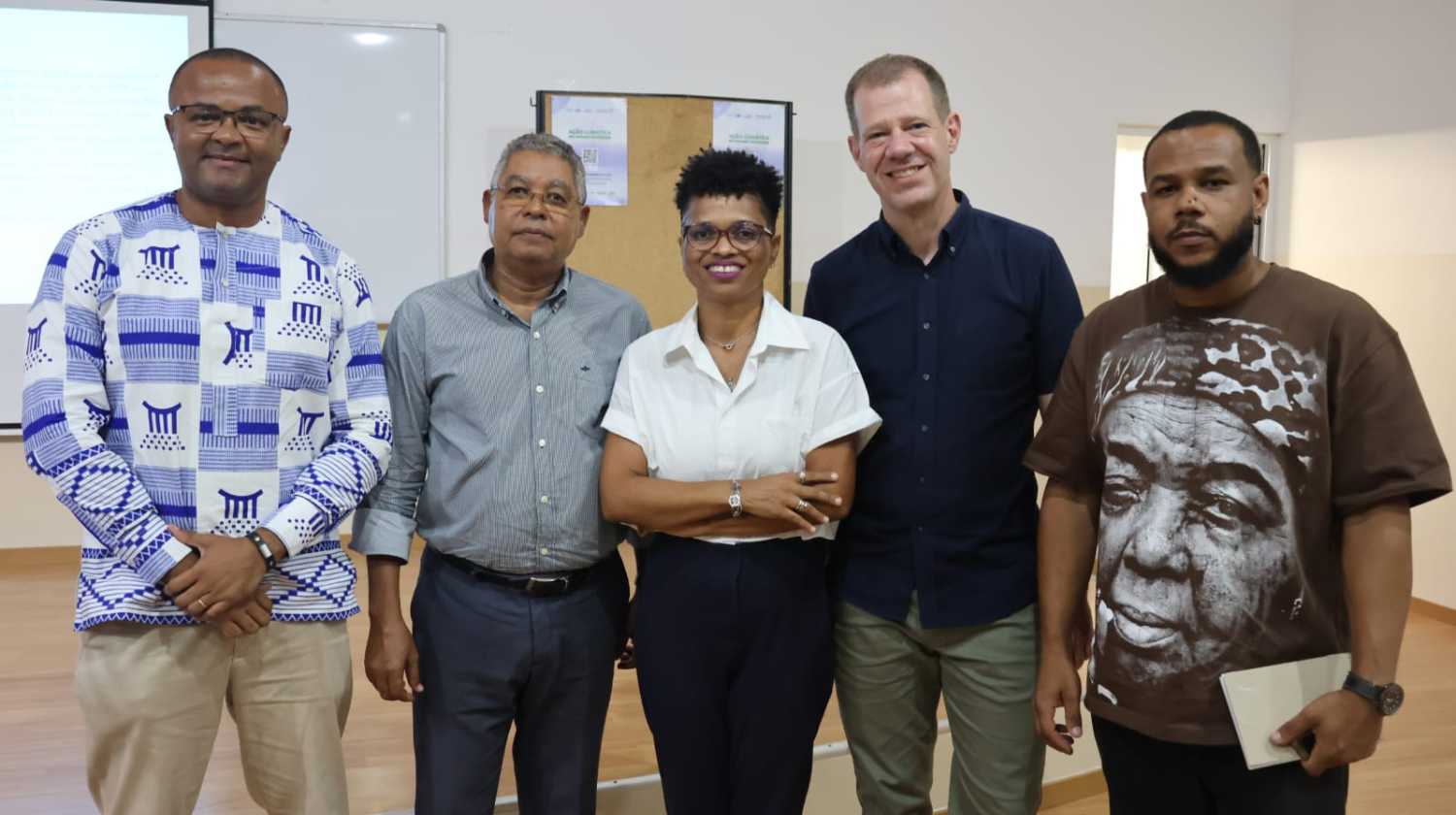
Results from the project Future Migration as Present Fact (FUMI) were presented in a public event at the University of Cape Verde on 27 October, and stirred enthusiasm and reflections among the audience and in the news media.
The project seeks to advance migration theory by better understanding the thoughts and feelings that underpin desires to stay or leave. It is carried out in three West African urban areas: Serekunda (The Gambia), Tema (Ghana) and São Vicente (Cape Verde) and includes a survey of 1000 young adults in each place.
Like all projects funded by the European Research Council (ERC), FUMI is geared towards scientific break-throughs rather than short-term policy relevance. However, many of the insights gained along the way can also stimulate public debate and policy formulation. The FUMI team has therefore ensured that the survey results are is easily accessible to non-researchers. The results are published both in English and in Portuguese, which is the official language in Cape Verde.
The presentation of results in Cape Verde thus focused on what could be of greatest interest in the local context, rather than what was most central to the scientific objectives of the project. Project leader Jørgen Carling presented selected themes (summarized below), followed by comments from three speakers with different perspectives: Celeste Fortes (anthropologist and university lecturer), Revan Almeida (rapper and cultural entrepreneur), and Paulino Dias (economist and senior executive, also pursuing a PhD in Ghana).
The presentation was attended by national and local news media and featured on the national evening news the following day. (See video link.)
Women and men in the face of emigration
Men and women in São Vicente have, in many respects, similar lives — for example, in terms of standard of living and life satisfaction. The differences are small but tend to favor men. However, there is a notable difference in sociability and social attachment, for example, in relation to one’s neighborhood. The greatest difference between the sexes appears in parenthood: young women are much more likely to have children and to be caring for them in daily life. Among young men, it is still more common to have a child that lives in another household than to have a child that lives with them. Regarding emigration, very few young people are completely uninterested in migration, and very few are entirely focused on finding a way to emigrate; most fall somewhere between these two extremes. Once again, the situation is surprisingly similar between men and women, although the desire to emigrate is slightly stronger among men, and differences in attachment to children seem to be an important part of the explanation.
Dreams of young people in São Vicente
We asked the thousand survey participants: “What is your greatest dream in life?” and recorded exactly what each person answered. Some responses were simple (“get out of this country”), others more elaborate (“Build my own business so I can give my children a better future”). We developed an innovative way to analyze these responses. What stands out most is that most people dream about basic aspects of life — things that perhaps ought to be a reality, not a dream: having a job, having a home, and giving their children a good upbringing. One in five young people in São Vicente dreams of having their own house. It is also notable that so many people dream of “having a job” or perhaps “a good job,” but rarely of pursuing a specific profession. Men and women have very similar dreams. An interesting difference is that dreaming of being able to support one’s children is more common among women, while dreaming of being able to support one’s mother is more common among men.
Contrasts and similarities with the continent
The project covered one city in each of three countries: The Gambia (the poorest), Ghana (intermediate level), and Cape Verde (the most prosperous). In many respects, the lives of young people reflect these differences. For example, young people in São Vicente are less likely to go hungry, are slightly more likely to have a job, and generally feel more satisfied with life. But in some respects, they are also less likely to invest in their own future. Young people in São Vicente tend to live one day at a time rather than make plans for the future. When asked to imagine receiving a sum of money, most young people in The Gambia and Ghana said they would use it to start or expand a business. In São Vicente, this answer was much less common. On the contrary, Cape Verdean youth were more inclined to spend the money on basic needs. It is striking that the dreams of young people in Cape Verde also tend to be more modest, especially compared to those in Ghana. The spirit of humility in Cape Verde resembles, in some ways, the Islamic values of The Gambia. This reminds us that the greatest contrasts in the region are not always between Cape Verde and the continent.





